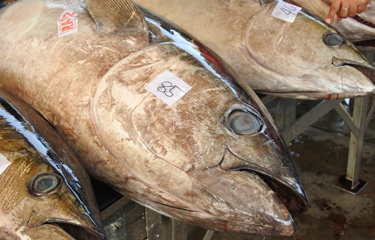Eastern Pacific Ocean fisheries managers must ensure that effective management measures are promptly put in place for bigeye, yellowfin, and skipjack tuna stocks when the Inter-American Tropical Tuna Commission (IATTC) meets later this month, insists the International Seafood Sustainability Foundation (ISSF).
In 2020, the IATTC conducted new assessments of bigeye and yellowfin tuna, which found that while yellowfin remains healthy, there was a 53 percent probability that bigeye is overfished and a 50 percent probability that overfishing was occurring.
In a press release issued ahead of the 98th session of the IATTC, taking place 23 to 27 August, 2021, ISSF President Susan Jackson acknowledged that while the COVID-19 pandemic “continues to stymie” the IATTC and all other tuna regional fisheries management organizations (RFMOs) in their functions, undertakings to establish the long-term sustainability of tuna fisheries and ecosystems “cannot wait for a return to normalcy.”
With the IATTC prioritizing discussions on new tuna conservation measures for the meeting, ISSF is urging the adoption of tuna measures based on current scientific advice along with related fish-aggregating device (FAD) management measures.
Jackson said that “decisive action” on these items in August would clear the way for the agenda at IATTC’s October meeting to progress on other pressing topics like harvest strategies and monitoring, control, and surveillance.
“The added fall IATTC meeting must be viewed as further opportunity to adopt all much-needed measures before the end of the year, rather than a reason to delay decision-making at the August meeting,” she said.
Determining that IATTC’s current tuna conservation measure has been ineffective in limiting catches of yellowfin, bigeye, and skipjack tuna, ISSF released a position statement in July that led with the request that the commission adopt a new precautionary and science-based tuna conservation measure. ISSF said this new measure should also address FAD management to prevent an increase of fishing mortality, specifically through the extension of FAD closures, active FAD limits, deployment limits, and buoy purchase limits. It also wants the commission to require raw data from echo-sounder buoys, and to set a clear timeline for the transition to FADs without netting, and to be primarily made of biodegradable materials.
In the October meeting, ISSF wants IATTC to address the following priorities:
- Developing FAD ownership rules and definitions to ensure accountability is maintained through the end of the FAD’s lifetime, and to design FAD-recovery mechanisms and incentives by 2023;
- Developing a workplan to adopt a FAD marking scheme by 2022 for all new deployments, regardless of vessel type, that requires FADs be marked on both the buoy and the FAD structure;
- Accelerating the development of management strategy evaluations for bigeye, skipjack, and yellowfin tuna.
- Adopting the IATTC electronic monitoring systems workplan and establishing a fleetwide observer program (human or electronic) for small purse-seine vessels by 2022. Require 100 percent observer coverage (human and/or electronic) in industrial tuna fisheries, including all those engaged in at sea transshipment, by 2024;
- Adopting the Port State Measures Resolution by 2022.
Photo courtesy of Alienaire/Shutterstock







